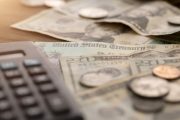
Robert Shiller, the Yale economist and inventor of the Case-Shiller Index, told Yahoo Finance Alive on Wednesday that the U.S. housing market has “aspects of a bubble to it.”
Shiller added:
This is not a market that collapses overnight … but you can see that we’re seeing price increases now that haven’t [been seen] since those years just before the [2008] financial crisis.
The Case-Shiller Index — now called the S&P CoreLogic Case-Shiller National Home Price Index — released on Tuesday showed that prices for the average home in the United States rose more than 13 percent since last April. Three major cities — Phoenix, San Diego, and Seattle — led the way, with annual gains of 20 percent, 19.1 percent, and 18.3 percent, respectively. Home prices in all 20 cities included in the index increased as well.
The reasons behind a housing-market bubble include: an increase in economic activity, as people suddenly have more income to spend; low mortgage interest rates; loose lending practices; new mortgage products, which reduce monthly house payments; supply that can’t keep up with demand; and speculators entering the market.
Another reason for the bubble relates to what author Charles Mackay penned in his 1841 book Extraordinary Popular Delusions and the Madness of Crowds, about the fear of missing out (FOMO). As Emily Huddleston stated on behalf of the real-estate brokerage firm Redfin, “a housing bubble occurs when home prices rise at a rapid rate to a level of instability. [It begins] when there is a shortage of inventory and an increase in demand. As the prices start rising, speculation begins to take effect. Consumers expect prices to increase further, so everyone wants to buy a home as quickly as possible. This drives up demand further and prices continue to skyrocket.”
In his interview on Yahoo Finance Live, Shiller compared the rate of price increases to those seen in the run-up to the Great Recession: “There is excitement and people are talking and some people are bidding way more than the asking price.”
Jeff Greene, the billionaire who became exorbitantly wealthy betting against the mortgage market before the real estate collapse in 2008, agrees: “There’s so much money in people’s … bank accounts that it’s just driven prices of everything higher. But” he added, “at some point this has to stop.”
The last time it stopped, it cost Americans nearly $13 trillion, according to Better Markets, which totaled up the losses four years later. One in seven Americans lost their jobs and were unable to find new ones. One in four found themselves saddled with mortgages that exceeded the value of their homes. Bankruptcies filed soared.
But this time, it’s different, said CNBC’s Jim Cramer in December: “A booming housing market is good, even if the last one ended horribly.” He touted “reforms” in Dodd-Frank — the legislation that was enacted after the Great Recession to keep another one from happening — referring indirectly to the creation of new federal agencies such as the Consumer Financial Protection Bureau, the Financial Stability Oversight Council, the Office of Financial Research, and giving the Federal Reserve additional powers. One of those new powers is the power to force the liquidation of a failing company, under its new Orderly Liquidation Authority.
Missing from the conversation is an economic rule called the Reversion Mean Theory — prices eventually return to the mean (the average before the bubble). History shows, however, that when they return, prices often fall well below the mean, forcing even the strongest credit risks into bankruptcy.
The timing of the market bubble remains the open question. The first glimmer of trouble ahead of the Great Recession appeared at least two years earlier. And even after the Lehman Brothers firm filed for bankruptcy in September 2008, housing and stock markets didn’t hit bottom until more than a year later.
Most home buyers are oblivious to the bubble of which the Case-Shiller Index warns, while others are taking a cue from Roy McAvoy in the movie Tin Cup, who said “Well, what the hell? You ride her until she bucks you or don’t ride at all.”



